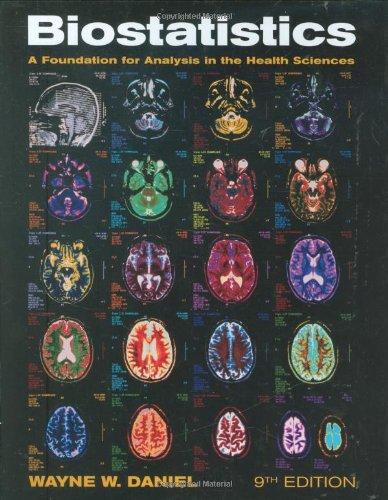Velthuis et al. (A-26) conducted a study to evaluate whether the combination of passively immobilized heparin-coating and
Question:
Velthuis et al. (A-26) conducted a study to evaluate whether the combination of passively immobilized heparin-coating and standard heparization can reduce complement activation in patients undergoing cardiac surgical intervention. The investigators note that heparin-coated extracorporeal circuits reduce complement activation during cardiac operations, but that little in vivo information is available on the reduction in alternative and classic pathway activation. Complement activation initiates a systemic inflammatory response during and after cardiac operations and is associated with pathophysiologic events such as postoperative cardiac depression, pulmonary capillary leakage, and hemolysis. Subjects were 20 patients undergoing elective cardiopulmonary bypass (CPB)
grafting randomly allocated to be treated with either heparin-coated extracorporeal circuits (H) or uncoated circuits (U). Among the data collected were the following plasma terminal complement complex (SC5b-9) concentrations at baseline, 10 minutes after start of CPB, at cessation of CPB, and after the administration of protamine sulfate:
Patient Treatment Baseline 10 min CPB End CPB Protamine 1 U 0.37 0.81 1.88 2.12 2 U 0.48 0.73 3.28 3.31 3 U 0.48 0.42 2.94 1.46 4 H 0.37 0.44 1.28 3.82 5 H 0.38 0.31 0.50 0.68 6 U 0.38 0.43 1.39 5.04 7 H 0.46 0.57 1.03 1.29 8 H 0.32 0.35 0.75 1.10 9 U 0.41 0.94 1.57 2.53 10 U 0.37 0.38 2.07 1.69 11 H 0.48 0.33 1.12 1.04 12 H 0.39 0.39 1.69 1.62 13 U 0.27 0.41 1.28 2.26 14 H 0.51 0.27 1.17 1.05 15 H 0.97 0.75 1.82 1.31 16 U 0.53 1.57 4.49 2.15 17 U 0.41 0.47 1.60 1.87 18 U 0.46 0.65 1.49 1.24 19 H 0.75 0.78 1.49 1.57 20 H 0.64 0.52 2.11 2.44 Source: Dr. Henk te Velthuis. Used with permission.
Step by Step Answer:

Biostatistics A Foundation For Analysis In The Health Sciences
ISBN: 9780470105825
9th Edition
Authors: Wayne W. Daniel






